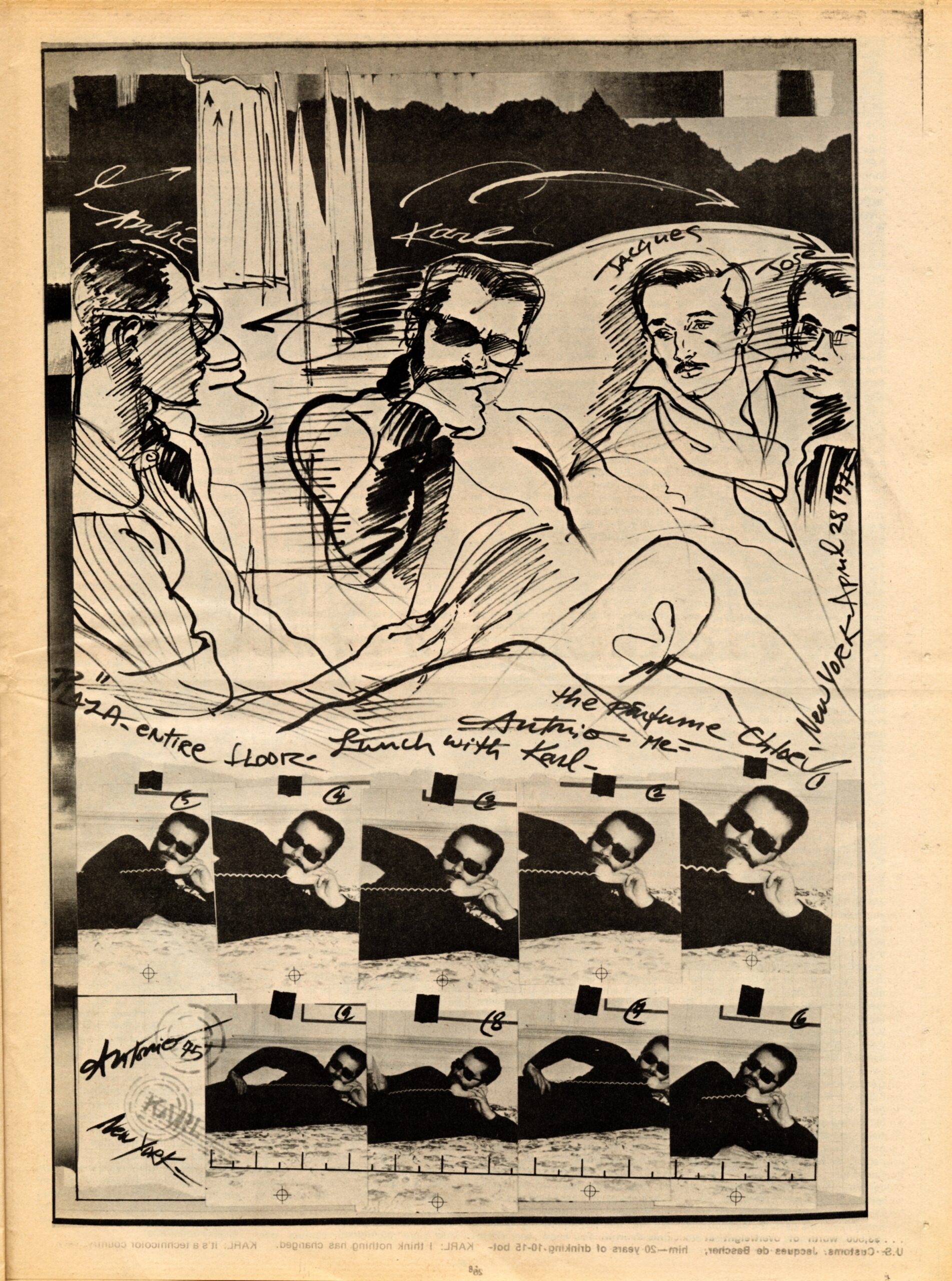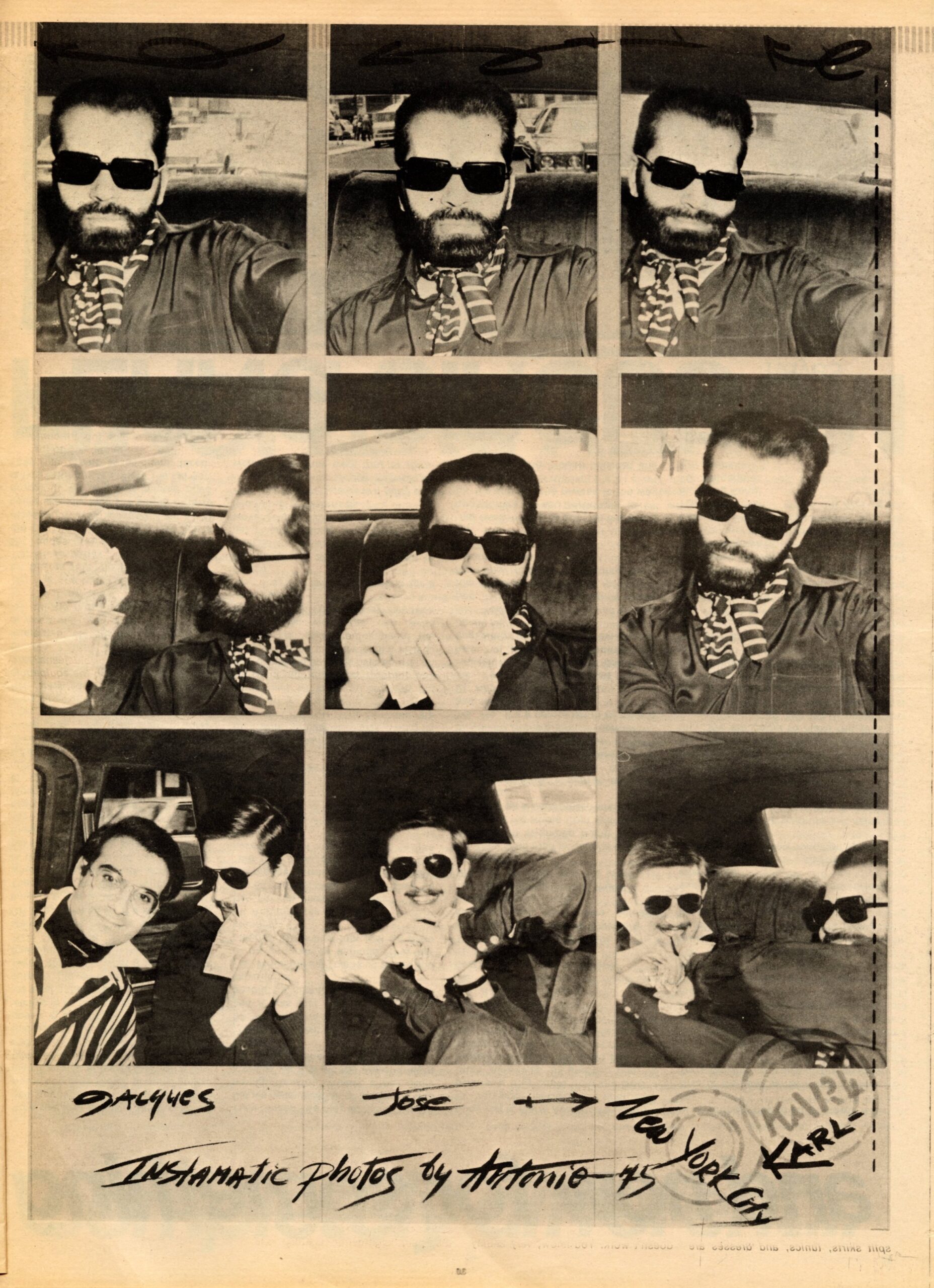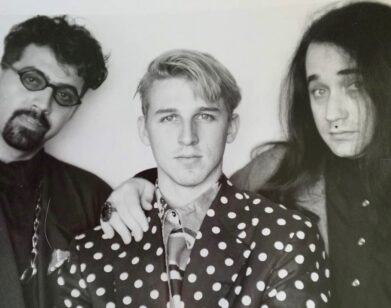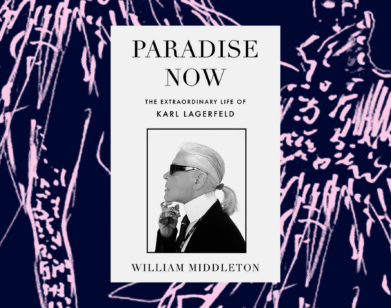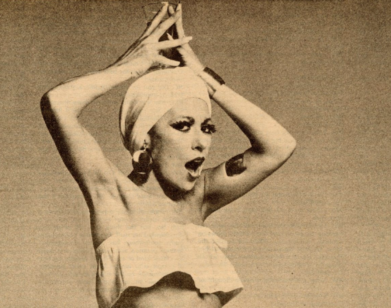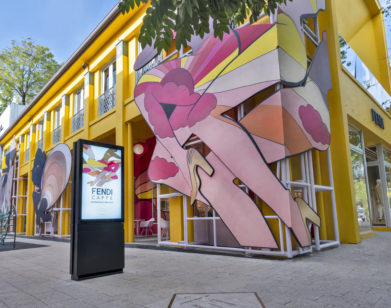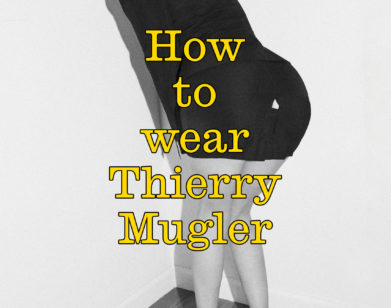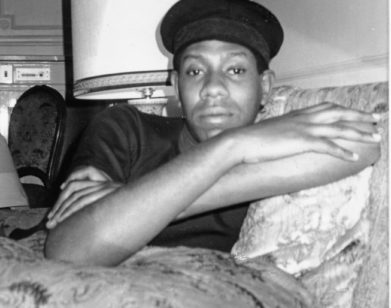NEW AGAIN
André Leon Talley Catches Karl Lagerfeld in a Cloud of Chloë
In honor of the opening of the Karl Lagerfeld: A Line of Beauty exhibit at the Met Costume Institute on Sunday, we revisit this conversation between André Leon Talley and the extraordinary designer from the Kaiser’s first visit to New York City in 1975.
———
Fashion and style in any decade must transcend the world of fashion. Those responsible for creating style: artists, artists, illustrators; poets, designers, often manifest outwardly their innermost expressions of creativity. This can often be a collective exercise coupled with the individual instinct and feedback from the designer’s environment, education, or cultural phenomena.
The electric dress popped right into the Sixties with the same flash as any media happening, Man Ray—the surrealist painter—was a blazing force in fashion photography at its 20th-century inception, the aesthetic beauty of a Dunand vase or a cloisonne-stained window can be adapted to functional clothes. Such is the case with Karl Lagerfeld, the genius, who pours silk over the body with the same distinction as he poured his new fragrance Chloe-on America while here to launch it with the expertise of Elizabeth Arden. The equipment for the launching trip. . . $3,500 worth of overweight at U.S. Customs. Jacques de Bascher, Karl’s aide-de-camp and friend had 7 pieces of luggage alone. Sprawled around Karl’s suite of rooms were regimented traveling cases that housed silk pajamas as well as massive hard-bound books. On the nite table was Mme. de Stael, the one feminine writer of the 18th century that was significant in formulating the ideas of The Age of Enlightenment. There were romantic tales of Anna Piaggi, the modern embodiment of the 18th century, who changes 4 times a day into an authentic 18th-century dress when vacationing at the Chateau Grandchamp.
Subdued Jose de Sarasola, the business mind of the team, balanced the bills on downtown shopping junkets where the equipe acquired American bargains such as a limousine full of surplus uniform shirts, cycling shorts, paratrooper suits for weekly country excursions. A jar of French mustard floated from suite to suite to bounce up the special diet of bland, boiled, blanched food which the doctor ordered to help Karl kick his habit which almost poisoned him-20 years of drinking 10-15 bottles of Coca Cola a day. With the Lagerfeld equipe, one never experienced the sleek stench of inaccessible chic of many of the worldly-renown fashion cliques and families. The three team members were intelligent, articulate, generous and above all genuinely courteous; and, Karl, Jacques, and Jose loved the enthusiasm of the people in New York’s floating fashion galaxy.
———
ANDRE: Just as Pauline de Rothschild, you travel with as many books as you do clothes?
KARL: Exactly. I can’t live without books. And I bought books here. I bought books in California. I came nearly with half-empty suitcases to have space for all the new books.
ANDRE: How does the big-ness of America influence you?
KARL: Since I came here twenty-five years ago?
ANDRE: No, since your arrival here to launch your new fragrance, Chloe, and present your first formal collection to New York and Los Angeles?
KARL: I think nothing has changed. When I came to New York, I had the feeling I was only here a week ago. Everybody tells you about New York, you see so many pictures, but when you are here finally you are not surprised because it’s exactly the way you suspected it.
ANDRE: What are all your impressions of California?
KARL: I think there is a bigger difference between California and New York than between New York and Paris. It’s really another world out there.
JACQUES: Everything is plastic. It’s fascinatingly plastic.
JOSE: It’s lovely, a lot of sun.
ANDRE: Do you like the houses in California?
KARL: I wouldn’t want to own any of them but they are very well kept. You remember the famous story of Marie de Noailles going to Madame Lopez’s house and saying, “It’s very clean!’
JACQUES: The light is very strange.
KARL: What I like the best in California is the air. It was easy to breathe.
JACQUES: The light made all colors like Kodachromes.
KARL: It’s a technicolor country, very technicolor.
JOSE: There were velvet lawns.
JACQUES: The seem to be very happy with their clothes, that’s the most important thing. What we were wearing was very foreign to them. Overdressed people, they just stared at us.
KARL: All those rich ladies who belong to the charities, they were more dressed than we were, my dear!
JACQUES: They were over, over, over-dressed. Overdressed.
KARL: I notice over there (in California) they never use the word tacky, they all say trash all the time. That’s the word I heard most.
JACQUES: Some of the nicest people we saw in Los Angeles were Tina Charles and her sister. They had this very clever, clever, evil raffine look. Jack Nicholson is very popular in France and it was nice to see him. I know he loves France and stays at Tony Richardson’s place very often. He’s a good friend of David Hockney also. He is really a big star in France.
ANDRE: Do you feel that fashion today influences and is influenced by the other fine arts as was so apparent in the thirties? As Giacometti did buttons for Schiaparelli and Dali designed special prints for her–that type of collaborative creation–does fashion become an integral part of the social and cultural history?
KARL: It’s the same. There is no time without fashion, because a period without fashion still has to a degree some characteristic fashion.
ANDRE: Your last spring collection was based on the 18th century in France-The Age of the Enlightenment. How did this consistent theme evolve?
KARL: The 18th century is, how I can say, our French folklore. Like the Japanese wear the kimono, for them it was the thing they did for ages and ages … French 18th-century clothes are folkloric. You see I didn’t do the court dresses. I did the country, the casual thing of that period which is a sort of folklore for me.
ANDRE: A lot of the hand-painted silk dresses were based on 18th-century porcelain designs?
JACQUES: Yes, he was inspired by antique china, such as those of Meissen and Nyon.
JOSE: The prints were influenced by the Chinese mood of the 18th century. Some of the porcelains from that time were made in China and sent back to France.
JACQUES: The hand-painted dresses you saw at the Lincoln Center were inspired from the Vienna Secession period. They had nothing to do with the original sketches, but they were very much inspired by the go-between, in Art-Nouveau and Art-Deco in Vienna. It was a very important school including people like Gustav Klimt. MacKintosh also is a part of the Vienna Secession system which was very influential.
ANDRE: Do the Hollywood myths influence you at all in your creativity? Garbo? Hepburn?
KARL: It did. In the period of nostalgia. That’s over now. They are perfected forever. Katherine Hepburn and Garbo are still the most modern women around. But I think the nostalgic period, we’ve got enough of that for the moment.
ANDRE: Your current fall/ winter collection had–what seems to me-modern panniers. Unlike the stiff bone crinolines of the past, the slashed and split skirts, tunics, and dresses are nonetheless full of coquetterie because of these invisible panniers.
KARL: It was made for comfort. With crinolines, you can’t move. Who wants clothes you can’t move in? There was nothing else to do but leave the skirts open.
ANDRE: With at least 200-300 different types of crepe de chine in Europe, how do you find the best ones?
KARL: I make my own. I say I want this and this and this, that way. People make it for me that way and that’s the way I get it. If it influences others, I ignore it because I got what I want.
ANDRE: Do you feel your mother was a grand influence upon you with her beautiful couturier clothes when you were growing up? Did she always take you out with her when she wore her dresses by Worth? Lanvin? Chanel? Mainbocher?
KARL: Sure. But you know when I was a child, those clothes were already ten years old and in the closet because I grew up during the War. So I saw all of those things like a memory of times past forever.
ANDRE: Does America influence French taste in clothes?
KARL: For sportswear perhaps, yes. If not that, I don’t know. Everybody has his own view. This trip has been an influence for me, but I don’t know how I will express that. Perhaps in something completely different.
ANDRE: Do you really want women to treat your clothes as scarves? Putting them in scented drawers? Lining them up on shelves? Fold them in armoires?
KARL: I love the idea. Yes, I do hate hangers. Hangers destroy my clothes. The way my clothes are made, they are impossible to see on a clothes-hanger. You need the body in it, to see what it really is and hangers destroy them because of the cut. And there are no linings. Hangers are proper for the Courreges dress. You take it off the hanger and it has the same shape on you. His dresses really look well on hangers. My clothes are just pieces of material.
ANDRE: Does layered dressing go with layered living? Being on one continent in the morning and another continent in the afternoon?
KARL: Look at my show, you saw it. Layered dressing is the easiest thing to live with. In the morning, you leave a cold country, you can be ready for the hottest corner in the world. You just have to remove three layers if you want. And if it’s cold, you put one layer on. If it’s real cold, you put one layer more. I also feel it’s a way of thinking about it. For me, there is no underwear or overwear. They are just pieces of clothes. You put all of them one over the other. They all have to be beautiful. Underwear has to be beautiful as what you have for overwear. Underwear is clothes too.
ANDRE: Who is the ideal Lagerfeld
KARL: A woman with a body like Ava Gardner, young. But not her looks, not her hair-do. I mean the shape of the body.
JACQUES: Jane Russell?
KARL: No Jane Russell! That’s too much.
ANDRE: No Twiggy form as a prototype for your clothes?
KARL: I hate too skinny. My dresses are not for very, very skinny people. There has to be a very feminine shape under them. The dresses I make are not for the boyish-looking girls. It doesn’t work. You know, very skinny/models was a designer’s dream of the sixties and late fifties. I think we had enough of that stuff. It’s very boring, those skinny couture bodies, um. Alors.
ANDRE: Who is your favorite great couturier or couturiere?
KARL: Of the past? I have to say Vionnet. And Mainbocher, but he’s still alive, no? He did marvelous things in the early thirties. For me the biggest fashion influence ever was Isadora Duncan. She was the biggest influence of the whole century. She really liberated everything- before Poiret, before everybody. Poiret was more a stage designer. I liked the mood of Poiret, but it was not elegant. As a designer, his coats and things were not as important as Vionnet.
ANDRE: Did you see any films while here in New York?
KARL: No I didn’t. I saw only people, people, people.
ANDRE: What are your origins Jacques?
JACQUES: Both Jose and I are from the south of Brittany which is a very traditionalist and royalist part of France.
ANDRE: What did vou do before meeting Karl?
JACQUES: I was in the Navy. And then I went to the university which was so dirty that I quit and just at that time I met Karl.
KARL: And Jose was studying too. They both were becoming lawyers.
JACQUES: We were both in law, boring law.
JOSE: And I was doing a thesis on political science.
JACQUES: I remember the first time I saw Karl, it was at La Coupole and he arrived. It was something like a birthday party. There were about twenty people including Antonio, Juan, Donna Jordan, Jane Forth, Gerard Falconetti, Amina Warsuma, Pat Cleveland, Eija, and Kenzo. I really can tell you that when all of this group was entering La Coupole, in the whole Coupole, there was a divine silence. The only noise was coming from this group winking through the tables to go to this huge table where they were seated. And he was a fascinating man to look at. And he is still.
ANDRE: The Coupole’s too American for me.
JACQUES: No one goes to La Coupole anymore. The most interesting thing to do in Paris is walking the streets. It’s the most romantic way to be in Paris. Nothing is special about Paris but the light and the air. When you understand that the kings of France always built their castles in the Loire Valley, it is because people there speak without accents, the vegetables are the best tasting and the light is so tremendous. That’s where we have the two chateau.
ANDRE: There are two castles?
JACQUES: Yes, Karl’s is closer to the ocean. There’s a house apart on Karl’s property. It is the entrance which used to be the milkmaid’s quarters. Exactly like Le Petit Hameau of Marie-Antoinette in the forest of Versailles. I am going to decorate that in a combination of neo-Gothic like Violet Le Duc and the castle of Louis II. As Karl is going to make the chateau entirely eighteenth century for the guests and somebody who has a nervous breakdown to rest there for 15 days or more, we all want to have a different kind of thing.
JOSE: I am going to be in the chateau, the pure eighteenth century one. Nothing neo-Gothic.
ANDRE: Having castles for weekend retreats, taking private planes for picnics, or refurbishing an entire chateau in the true style in the Loire Valley, some might consider your style as decadent?
JACQUES: In this country, decadence means trashy, pornographic, dirty. Cadent comes from the Latin cadere which means to fall. Decadent is something very different. It’s the beautiful way to fall. It’s very slow movement which has lots of beauty, you know. It can be a kind of self-kill-ing in a beautiful way, a tragic way. This is decadence. It would be pretentious to consider ourselves decadent but it’s very close to that. I don’t find it an insult to be called decadent. In Pop magazines, they call pop (rock) stars decadent. They have nothing to do with what decadence means. Decadence is divine when it’s decadent. Two movie directors who can talk about decadence are Visconti and Joseph Losey. And two people who can talk about Cadent are Fellini and Russell. Those are two very separate worlds. They have nothing in common. All those pop stars belong to the Cadent movement. The one that is really falling, self-destructive, without beauty—lots of frenzy, without beauty. And decadent has a very exasperating beautiful tempo which is superb art. It is a very difficult art. There is a decadent writer, Josephin Peladan, who explains magnificently what decadence is at the turn of the century. Periods of decadence are very important. We are in a decadent period. We could also call it a Cadent period. It’s less decadent because there was much more beauty at the turn of the century.
ANDRE: Why do you wear blue jeans? You are the only person in the equipe who wears blue jeans with the silk and crepe de chine?
JACQUES: I bought my pair of blue jeans 15 days ago. I thought, in a silly way, it was very American. Because wearing white flannel and crepe de chine is not shocking in Paris. I noticed it is very shocking here and you look very much like a foreigner. One feels uncomfortable looking too much like a foreigner.
ANDRE: What do you feel about the ashtrays?
KARL: Ashtrays? I don’t smoke, I never smoke.
ANDRE: I should explain that ashtrays is a term I use for New York bar-hangouts.
KARL: Oh, don’t ask me about New York bars. I never went to any New York bar!
JACQUES: I just drop the cigarettes on the floors.
ANDRE: And you Jose?
JOSE: I don’t smoke.
ANDRE: Karl, do you fall in love everyday with somebody new? Or do you keep the same lover for five or six vears?
KARL: No, not at all. I never fall in love. I am just in love with my job. I think it’s much more important to love your work. I think for a man to be in love with his job, that’s the real thing.
ANDRE: You sleep alone in that big beautiful art moderne bed in your Paris apartment?
KARL: Those type of beds were made for lonely persons anyway. If you see the whole room, you will think about everything except sex, because it’s the unsexiest bedroom ever. And I love unsexy bedrooms.
